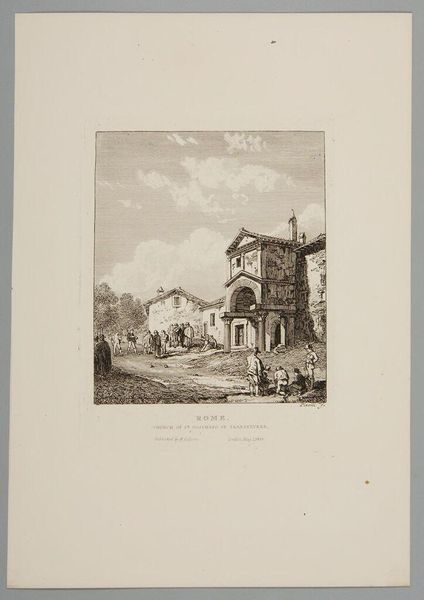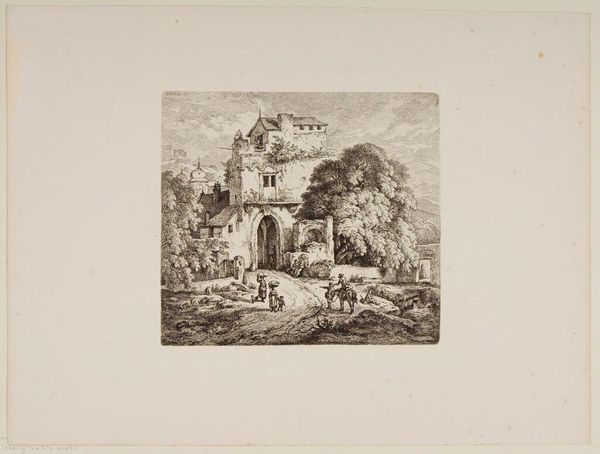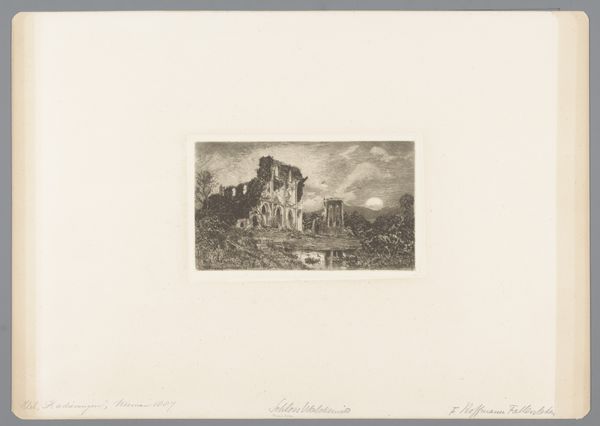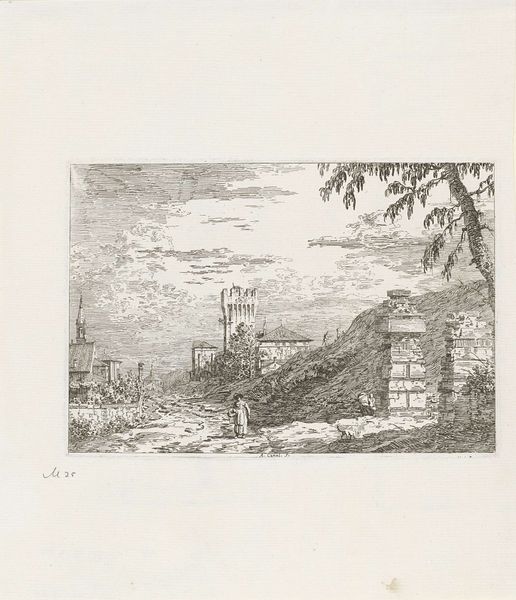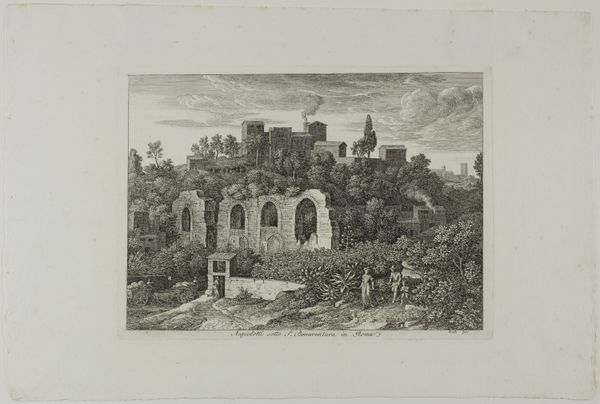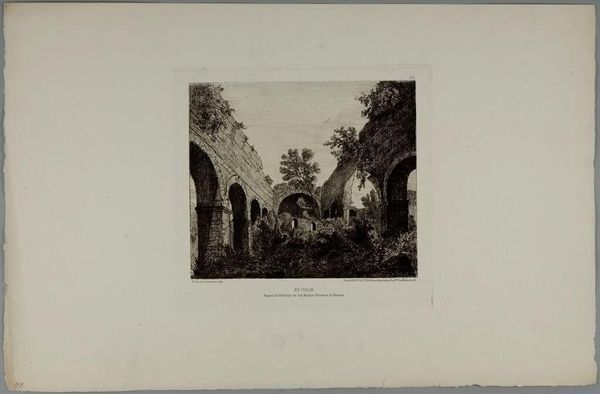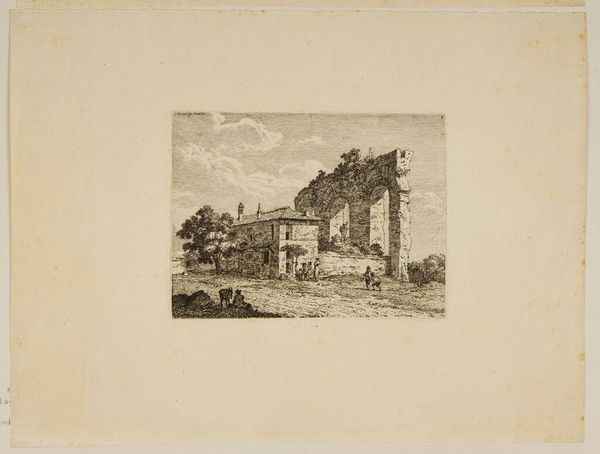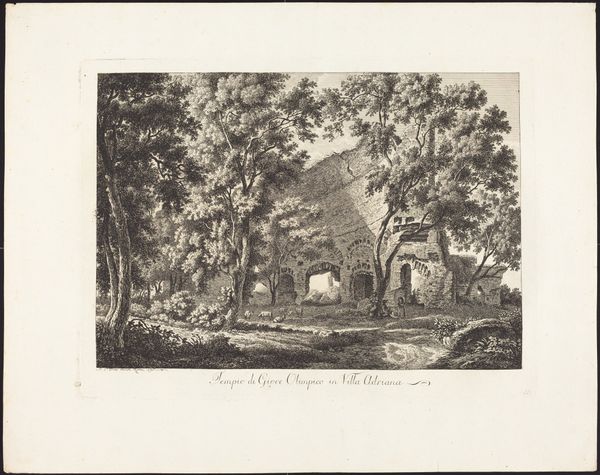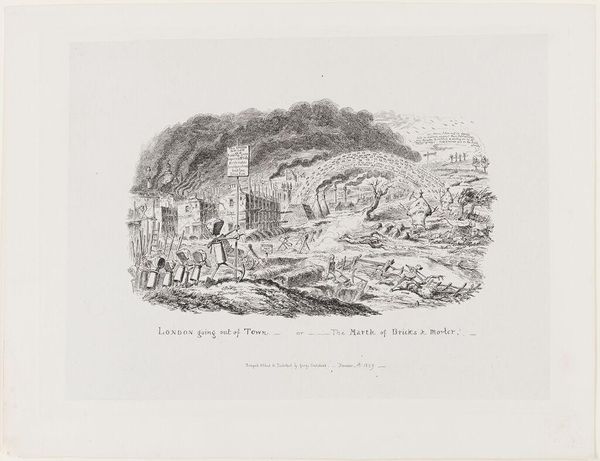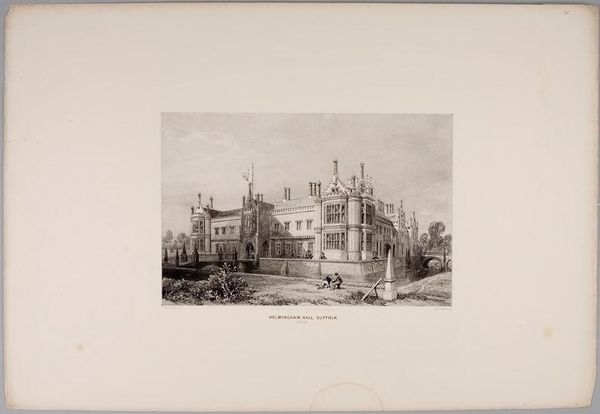
Copyright: CC0 1.0
Curator: James Duffield Harding's print of Moreton Hall in Cheshire presents us with a rather gothic impression, doesn't it? The stark contrast and shadowed details immediately create this sense of imposing grandeur. Editor: Absolutely. And given Harding's context—his facility as a lithographer, his drawing manuals, the market for picturesque views of estates like these—we can read this image as more than just a portrait. This print speaks to the means of disseminating images. Curator: Yes, the reproduction speaks volumes, but I'm particularly drawn to how Harding uses light to emphasize the Tudor architecture. See how the timber framing is highlighted against the pale stone? Editor: I see the light, but I'm more interested in the labor required to create and distribute such images at this time. The paper, the ink, the press: these were material costs that shaped the artwork's accessibility and its audience. Curator: That's an important point. And thinking about the audience, these kinds of images surely contributed to a broader understanding of architectural styles, influencing taste and perhaps even construction practices. Editor: Precisely! The artwork not only represents a place, but also a network of production and consumption that reflects the social and economic structures of the time. It is all about the movement of material goods. Curator: Well, I still appreciate how Harding captured the mood of Moreton Hall. It's a romantic vision, isn't it? Editor: I do concede that Harding's technical skill is evident. Considering the means of production at the time, the details are very impressive.
Comments
No comments
Be the first to comment and join the conversation on the ultimate creative platform.
